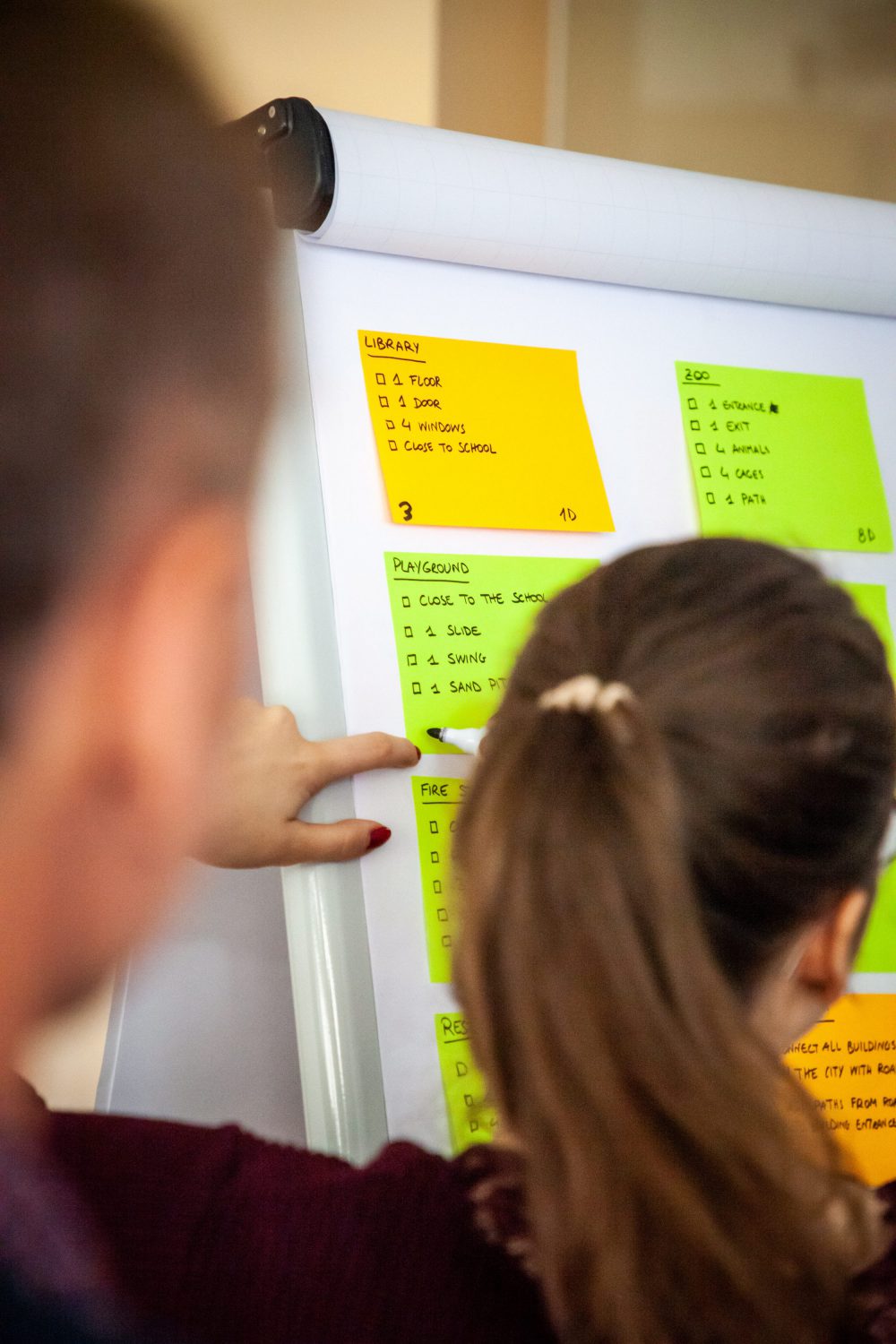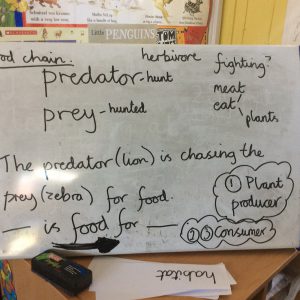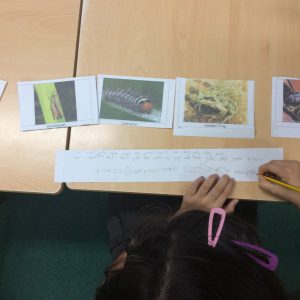
May 23, 2019, by Rupert Knight
Modelling: some thoughts on thinking aloud
In this post, Rupert Knight reflects on the value of modelling as a ‘core practice’ and the live, thinking aloud component of this in particular.
In every teacher’s repertoire, there are a number of specific pedagogical practices that are fundamental to almost any subject taught. They might include, for example, explaining a new concept or managing a whole-class discussion. These powerful tools, each of which depends on the honing of skills over time, have sometimes been termed core, or high-leverage practices, as seen in the work of this group of US teacher educators.
One such practice is teacher modelling.
Modelling, as an instructional strategy, builds on the work of Wood, Bruner and Ross on the scaffolding of learning by a teacher or ‘tutor’. An underpinning idea is that of contingent, or flexible, support and a transfer of responsibility from teacher to pupil. These are points later taken up in a more structured form in the idea of ‘gradual release’, as seen in this article by Douglas Fisher. The first part of this process of transfer (I do it; we do it; you do it together; you do it alone) may be a brief episode of teacher modelling. Modelling is a strategy owing much to the social learning theory of Albert Bandura, which emphasises the power of learning from influential examples, rather than unguided actions. Modelling has received renewed attention recently due to the interest in the limitations of working memory: influential articles, such as this much-cited paper by Kirschner, Sweller and Clark, point to the need to minimise extraneous cognitive load and argue for the power of the worked example.
At this point, it is worth considering what it is that a teacher might be modelling. For example, it could be one or more of the following:
-
Specific tasks or procedures to be completed;
-
Ways of thinking or regulating one’s learning;
-
Other attributes of a good learner (e.g. collaboration or resourcefulness).


In doing this, much of the skill and judgment lies in things like the choice of examples, clarity over the main teaching points, the likely misconceptions to be encountered and the language used. Plenty of sources offer advice on this, including this recent article in the TES and the University of Cambridge’s ORBIT site.
Modelling potentially involves a variety of teacher moves, such as the demonstration of key processes. In lessons that I observe, effective modelling is often evident, but I am frequently struck by the relative scarcity of one component: thinking aloud, or what we might refer to as metacognitive modelling.
One of Bandura’s key insights was that simple exposure to a good example (or model) is insufficient. The learner needs to be directed to notice its essential features. This is where the articulation of expert thinking, so often left tacit, can be made explicit to pupils. The case for this is made strongly in the Education Endowment Foundation’s 2018 guidance report based on evidence around metacognition. Showing how a teacher gets started on, self-monitors and evaluates a problem-solving process, for example, can be immensely valuable. Doing so live offers a glimpse of thinking at work in real-time. This form of modelling often goes beyond the successful completion of a single specific task, or the straightforward worked example, and allows learners to experience features of a process such as:
-
Interpreting instructions or given information;
-
Relating a particular task to relevant prior experiences;
-
Planning an appropriate resolving this uncertainty;
-
Reasoning and making decisions;
-
Considering alternative perspectives;
-
Involving other people or drawing on relevant resources;
-
Managing possible pitfalls and self-monitoring to minimise them;
-
Concluding, checking and publicly presenting a task.
These ‘think alouds’ are a long-standing feature of the teaching of reading comprehension, as teachers model their response to a text and are embedded as part of the transfer of responsibility in approaches such as Reciprocal Teaching. While I am arguing for their more widespread use across the curriculum, I don’t mean this in a formulaic way, or at the expense of pupil interaction, but as a distinct strategy, used discerningly for maximum impact.
To take a specific example, let’s consider calculating the area of a compound shape.
I might begin by modelling some generic ‘entry’ strategies. Firstly, I wonder aloud what I already know about calculating area – perhaps pre-empting a likely misconception by clarifying for myself the difference between this and perimeter. I notice the way this resembles two rectangles –shapes I’ve encountered before in an area context. I then become ‘stuck’, due to the missing numbers, but ask myself, “Is there anything here that can help me find the missing information?”, enabling me to derive these values. As I continue to work through the problem, I articulate my decision-making about the process, including attempts to work systematically: “I’m going to draw a line here to show how to divide this up…there’s more than one way, so does that matter?” or “I need to write down the measurements of each rectangle so that I don’t miss anything out.” Having monitored my progress through the task, I finish by acting out a common error and initially give my answer in centimetres. This provides an opportunity for modelling a final check: “So, my answer is 29cm. That doesn’t look quite right. Let’s take a look back at the question…ah, area. I need cm squared.” All of this has the tone of dialogue, through the consideration of alternatives, but the only voice has been mine.
So why don’t we see more of this powerful teaching tool?
Perhaps we need to acknowledge that this is a challenging strategy to enact, particularly for the novice and to consider ways to overcome common fears:
-
Isn’t talking aloud and acting out our internalised thought processes in this exaggerated way a strange, somewhat counter-intuitive thing to do? Try think of this, like much of teaching, as just another form of getting into role. Perhaps it would help sometimes to do this as a double-act with another adult prompting you with ‘naïve’ questions?
-
Doesn’t live modelling like this require a step away from the safety net of pre-prepared slides and resources, into a scary world of apparently spontaneous presentation and real-time scribing? Only on the surface: this can be every bit as prepared as any other part of a lesson. This is a teacher-led, rather than shared, process so you retain control over where it goes.
-
Could articulating a coherent thought process as you demonstrate a task, live and in the moment, be potentially exposing in subject knowledge terms? Once again, you have pre-planned this performance and, in any case, modelling potential errors and a process of checking (e.g. looking in the dictionary or at a times tables chart) is all part of the learning.
-
Won’t teacher-led modelling and thinking aloud feel uncomfortably like a dreary monologue and be insufficiently engaging – with all the behavioural challenges that may bring? This is only intended a brief episode in an otherwise interactive lesson. One of the features to incorporate may be the consideration of different perspectives (whether voiced by another adult or yourself) so this need not be a one dimensional, linear walk-through. See the concept of a dialogic stance in a previous post in this series.
I hope you feel inspired to bring even more thinking aloud into your modelling practice and it would be great to hear of your experiences of this.
No comments yet, fill out a comment to be the first

Leave a Reply